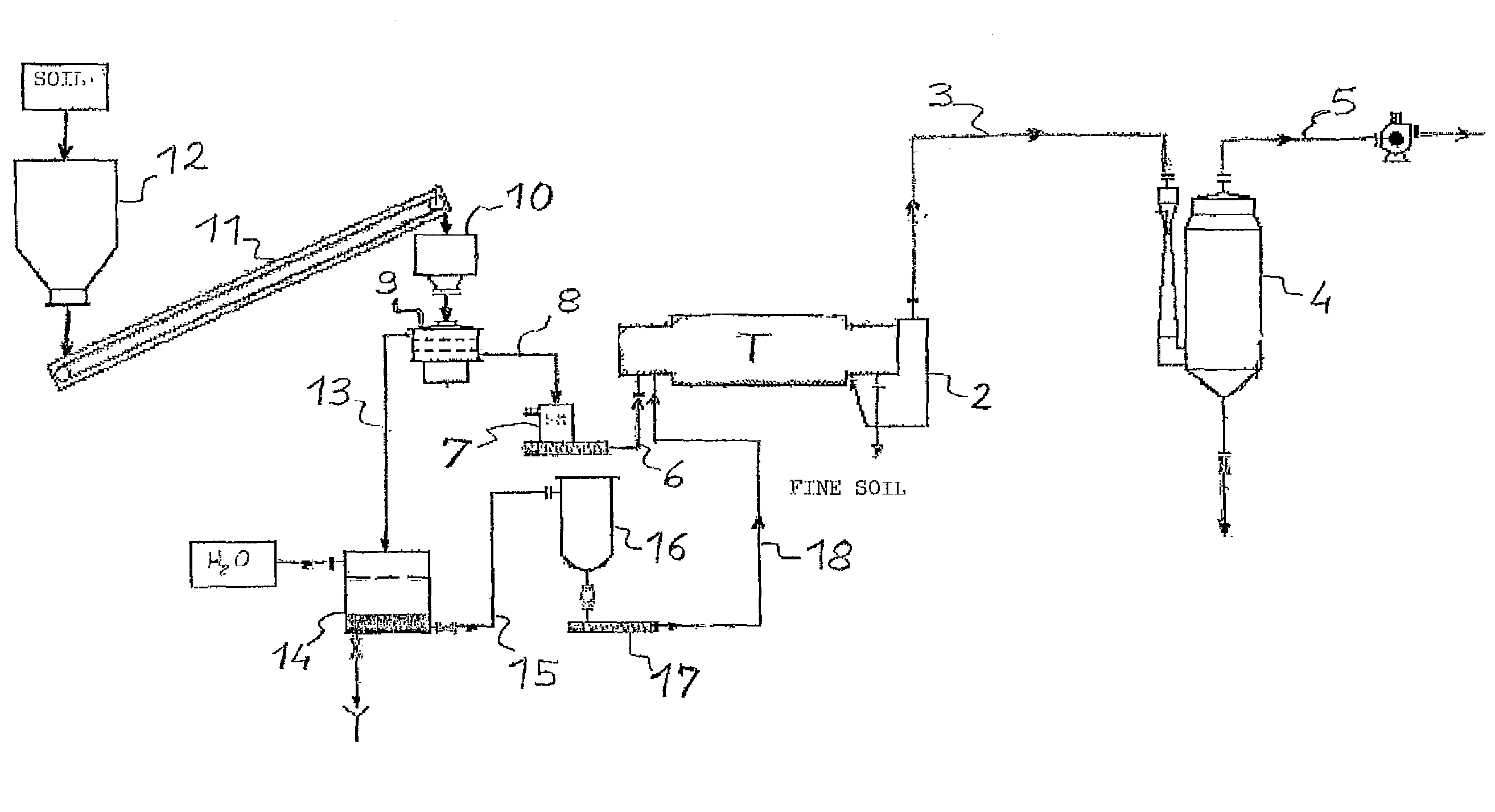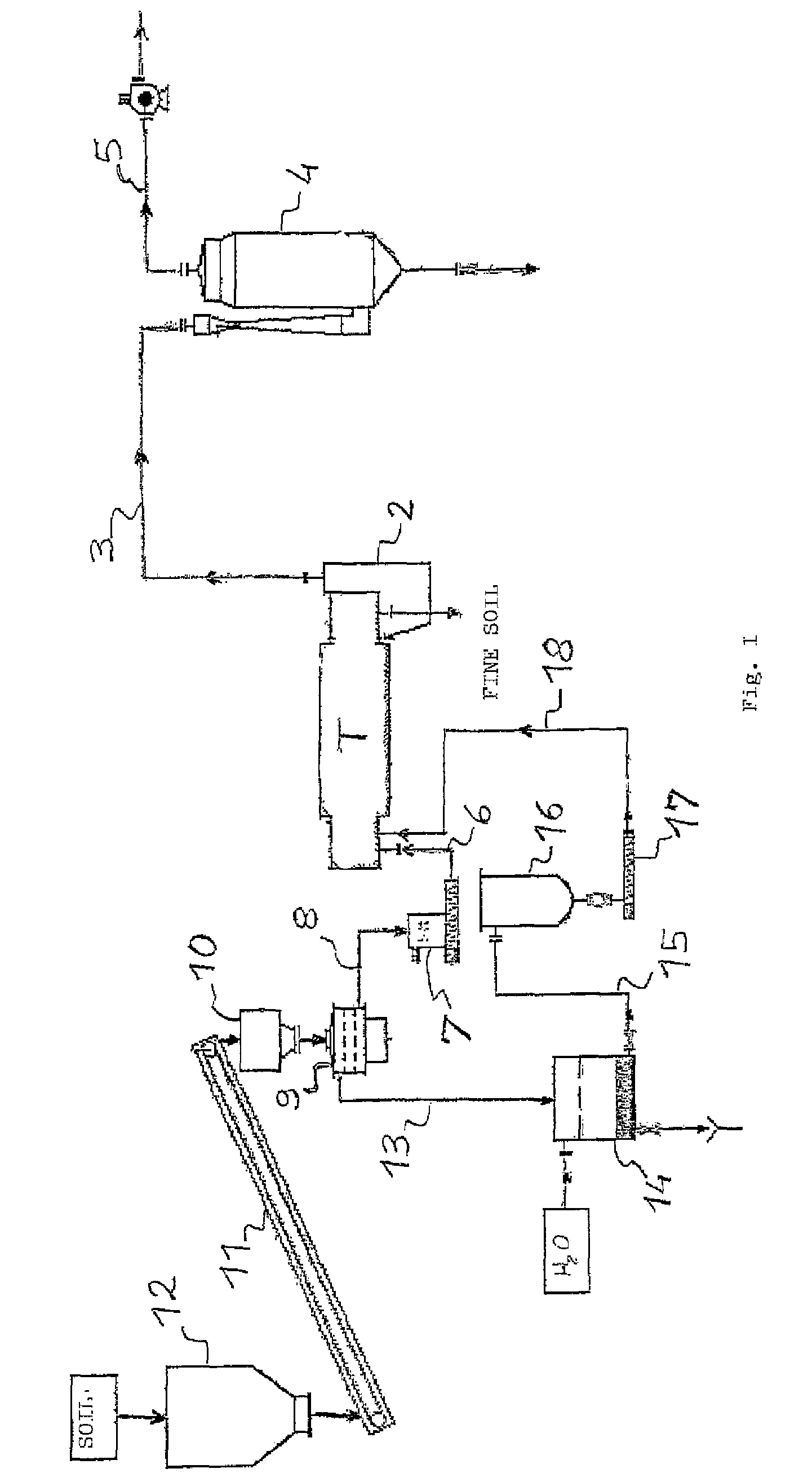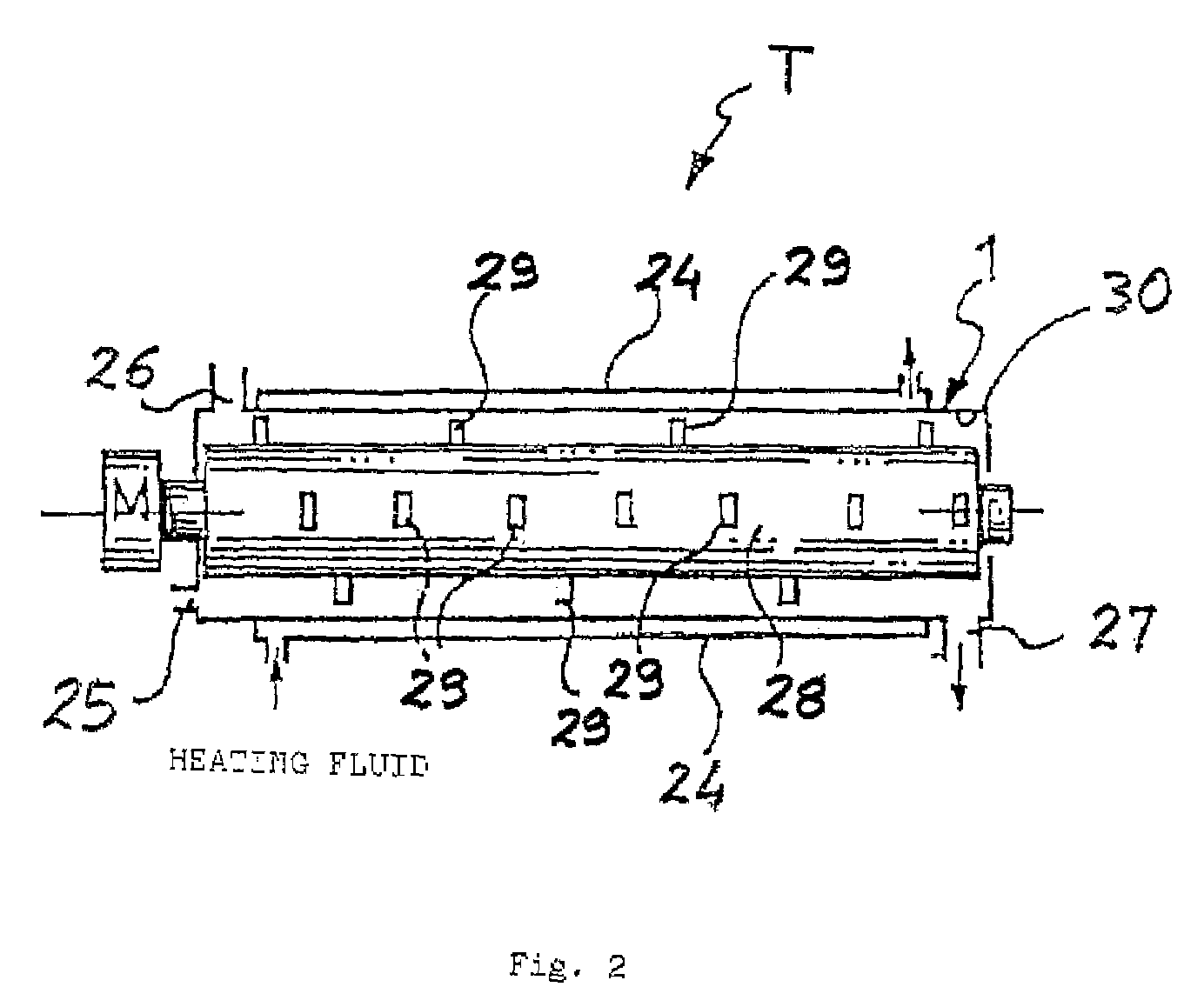Method of remediating soil contaminated with polyhalogenated hydrocarbons
a technology of polyhalogenated hydrocarbons and soil, applied in the field of environmental remediation, can solve the problems of high cost, complicated methods, and toxic to the flora and fauna, and achieve the effect of low installation and management costs and low energy consumption
- Summary
- Abstract
- Description
- Claims
- Application Information
AI Technical Summary
Benefits of technology
Problems solved by technology
Method used
Image
Examples
example 1
[0051]Utilising the device schematically described above and following the method of the invention, soil coming from an area contaminated with PCBs, PCDDs and PCDFs having a water content of approximately 10% was subjected to remediation.
[0052]Such soil had a content of fine soil (particles smaller than 3 mm) equal to 50.2% of the weight, gravel or grit (larger than 3 mm) 16.4%, stones and bricks 32.0% and grass 1.4%.
[0053]The fine soil contained a total amount of PCBs equal to 1.18 mg / kg and a total content of PCDDs and PCDFs equal to 0.578 μg / kg.
[0054]The clods taken from the contaminated area were loaded in the hopper 12 and fed from this to the clod crusher 10 by means of the conveyor 11. The material exiting from the crusher was separated by the sieve 9 into a fine soil fraction (size3 mm).
[0055]The fine soil was fed, by means of the doser 7, to the turbo-heater T, at a flow rate of 10,000 kg / h.
[0056]The stones and gravel exiting from the sieve 9 were washed with water inside t...
example 2
[0064]Clods taken from the same soil as that of example 1 were loaded in the hopper 12 and fed from this to the clod crusher 10 by means of the conveyor 11. The material exiting from the crusher was separated by the sieve 9 into a fine soil fraction (size3 mm).
[0065]The fine soil was fed, by means of the doser 7, to the turbo-heater T, at a flow rate of 10,000 kg / h.
[0066]The stones and gravel exiting from the sieve 9 were washed with water inside the washer 14 and the washing waters were collected in the tank 16, from which, by means of the pump 17, a continuous stream of such water was fed into the turbo-heater T at a flow rate such to bring the moisture content of the fine soil in the entry zone of the turbo-heater to a value of approximately 18%.
[0067]The temperature of the inner wall of the cylindrical tubular body 1 was maintained at approximately 270° C., by means of diathermic oil circulating in the heating jacket 24, while the rotation speed of the bladed rotor 25 was mainta...
PUM
 Login to View More
Login to View More Abstract
Description
Claims
Application Information
 Login to View More
Login to View More - R&D
- Intellectual Property
- Life Sciences
- Materials
- Tech Scout
- Unparalleled Data Quality
- Higher Quality Content
- 60% Fewer Hallucinations
Browse by: Latest US Patents, China's latest patents, Technical Efficacy Thesaurus, Application Domain, Technology Topic, Popular Technical Reports.
© 2025 PatSnap. All rights reserved.Legal|Privacy policy|Modern Slavery Act Transparency Statement|Sitemap|About US| Contact US: help@patsnap.com



